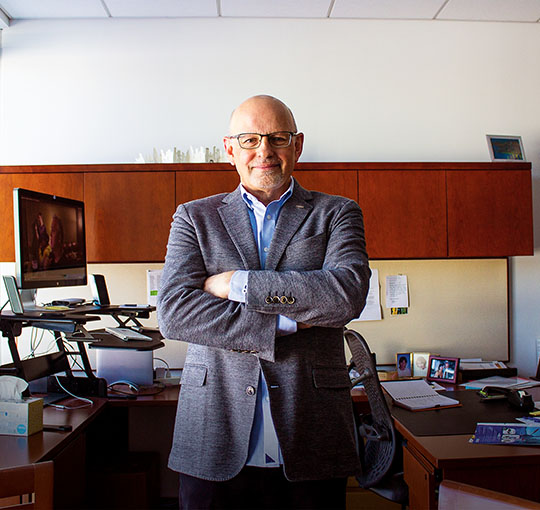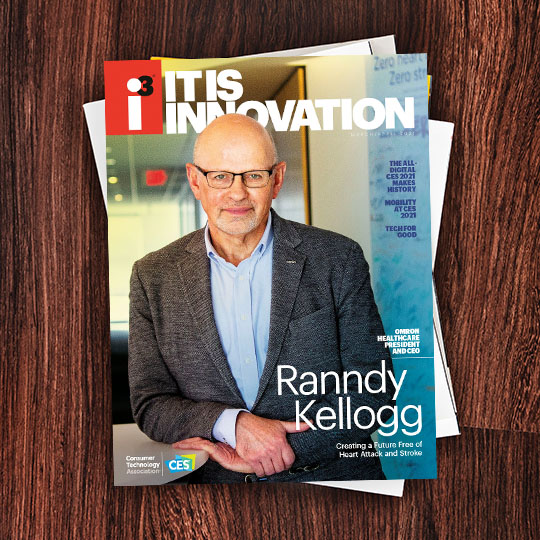
The COVID-19 pandemic has put health and access to care and new technologies into focus. The last year was an awakening among consumers to the role telemedicine can play in their health care and condition management. It was also an awakening for physicians to the benefits of more communication with patients via telehealth.
One recent survey showed that two-thirds of consumers are now more willing to use telehealth tools to manage their health conditions as a result of social distancing measures, and with expanded Medicare reimbursement, this technology is more accessible to physicians. Remote care tools are helping healthcare providers enhance their quality of care by giving patients the clinically accurate tools they need to monitor their health at home.
This is critically important for managing chronic health conditions during the pandemic. One hundred and sixteen million U.S. adults are hypertensive, and more than 37 million of them have uncontrolled Stage 2 hypertension leading to greater risk of heart attack and stroke. They need more support to manage their condition. The risk that these patients live with every day has become even bigger during the pandemic. With the health care system overwhelmed and with patients missing their regular appointments, their management of hypertension has been jeopardized. Recent reports show that heart attack death rates have more than doubled during the COVID-19 pandemic with fewer patients going to the hospital when experiencing chest pain or other symptoms.
In regard to remote patient monitoring, OMRON just launched our first remote patient care service, VitalSight™. Remote patient monitoring services like VitalSight, provide data from the patients’ home, and can truly save lives by providing physicians with the health data they need to make informed treatment decisions and improve patient health outcomes.
Data security is a priority for OMRON. The consumer’s data is theirs and it’s not shared unless they share it. Anyone who tracks their health data with an OMRON connected monitor and app has the ability to choose whether or not they want to share their data with their physician.
OMRON medical devices are HIPAA-compliant, and we hold ourselves to an even higher security standard. VitalSight, for example, uses a 512-bit encryption for security, well exceeding the HIPAA standard of 128-bit.
Older consumers have adopted blood pressure monitors for use at-home and they’re adopting and using our apps at a higher rate. The past year has awakened more older consumers to the benefits of managing a health condition from home and how these technologies can foster greater communication with their physician. We’ve also noticed how behavior among older consumers has changed during the pandemic and the new ways we can engage with them. Older consumers are a priority for us.
OMRON has worked throughout our history to listen to their feedback, gain insights from their doctors, and to design technology tailored for their needs and preferences. Medical-grade accuracy and ease-of-use are key deliverables in our heart health technologies and we’ve also made it seamless to share data from an OMRON blood pressure monitor with a doctor if the patient decides to do so. The VitalSight kit includes an OMRON connected blood pressure monitor and data hub that are pre-set to securely share measurements with the patient’s physician and care team.
But don’t forget, hypertension is not just an older person’s condition. When the American Heart Association (AHA) and the American College of Cardiology set the categories for high blood pressure in 2017, hypertension had tripled in men from age 22 to 44 and doubled in women under 45 years of age. With the AHA’s estimate of 116 million adults in the U.S. with hypertension, that means nearly one in two of us has high blood pressure. It’s staggering!
OMRON has transformed the global heart health marketplace with the introduction of HeartGuide™, the first wearable blood pressure monitor, and Complete™, the first blood pressure monitor with EKG combined in a single device for use at home.
We introduced HeartGuide three years ago and it transformed the idea of what a blood pressure monitor could be. As a wearable, HeartGuide fosters regular monitoring and really puts the consumer in touch with their condition. The physician receives more data from monitoring and gains more insights for treatment decisions. Our team has heard from customers that HeartGuide makes it easier to fit daily monitoring into their lifestyle and build heart-healthy habits.
We created Complete to help serve those who must manage AFib, a condition that comes with five times higher stroke risk, and to help anyone who has a family history of irregular heartbeat. Irregular heartbeat is often missed at the doctor’s office because it is just that — irregular. With Complete, anyone can easily monitor for this condition at home, and our customers say it gives them greater peace of mind to know they have a more complete view of their heart health.
We’ve heard stories from consumers that Complete detected their irregular heartbeat, they took the data to their doctor, more tests with their physician confirmed the diagnosis and they began a treatment plan to address their condition. That’s so important to us.
Now, with Complete, patients who discovered this condition can proactively manage it to significantly reduce their risk. OMRON is also innovating our digital health services. HeartGuide and Complete — and all of our other connected blood pressure monitors — will pair with our new app, OMRON Connect 2.0, which allows users to securely store, track and share their health data with their families or physician and monitor their numbers over time.

I3, the flagship magazine from the Consumer Technology Association (CTA)®, focuses on innovation in technology, policy and business as well as the entrepreneurs, industry leaders and startups that grow the consumer technology industry. Subscriptions to i3 are available free to qualified participants in the consumer electronics industry.